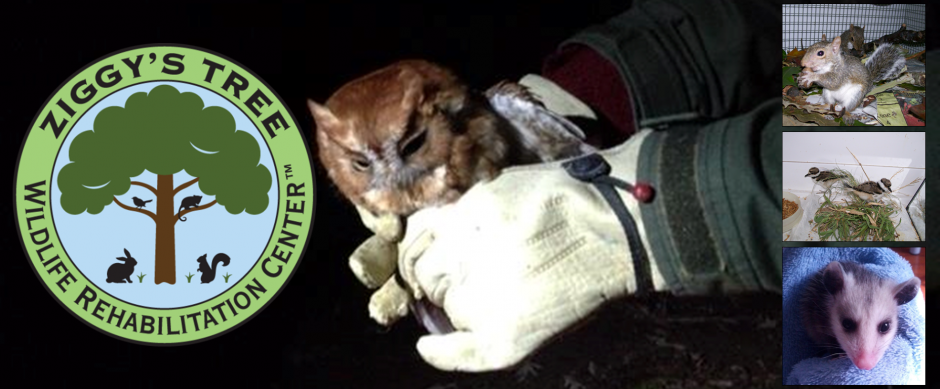Because state and federal regulations prohibit unlicensed individuals from caring for wildlife, we are not able to give out feeding instructions. However, we can offer emergency instructions until you are able to get the animal to a wildlife rehabilitator.
Please handle any injured/orphaned animal that you have found with care. Over handling an animal can lead to stress-related death. Since wild animals can have communicable diseases, you should always wear gloves and wash your hands thoroughly after any contact with the animal. If the animal bites you, it may need to be euthanized and checked for disease.
If you have found an injured animal please follow these instructions:
- Prepare a cardboard box or pet carrier by placing a towel or rags inside. Please make sure there are no loose threads or strings on the towels or rags as the animal may get caught and further injure or kill itself. The box should only be large enough for the animal to rest comfortably in, but not so large that it can thrash around and cause further damage. Make sure there is adequate ventilation.
- Wear heavy gloves to prevent risk of injury or transfer of diseases.
- If the animal is small and not attempting to bite, scratch, or puncture you with talons, pick it up and place it in the container.
- If the animal is large or attempting to do any of the above, gently use a broom or similar item to scoot it into the container. For larger birds, you can also try to throw a sheet or blanket over it and slide it into the box.
- Make sure that the transport container is secure. The animal that you thought was in a coma can quickly regain consciousness. Many animals can squeeze through the smallest of gaps and can push or pull with great strength when scared. Some animals such as chipmunks or squirrels can chew through cardboard. Loose animals in cars can be a dangerous situation.
- Place the container in a warm, dark, quiet place away from people and pets to reduce its stress until you are able to get it to a local wildlife rehabilitator.
- Keep the animal warm by placing a heating pad on the LOW setting under only HALF of the animal’s box or carrier.

